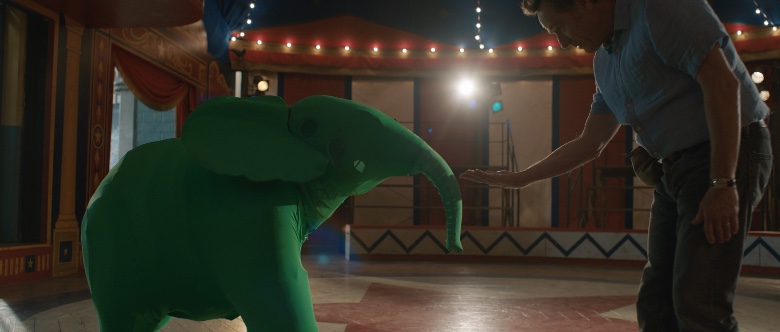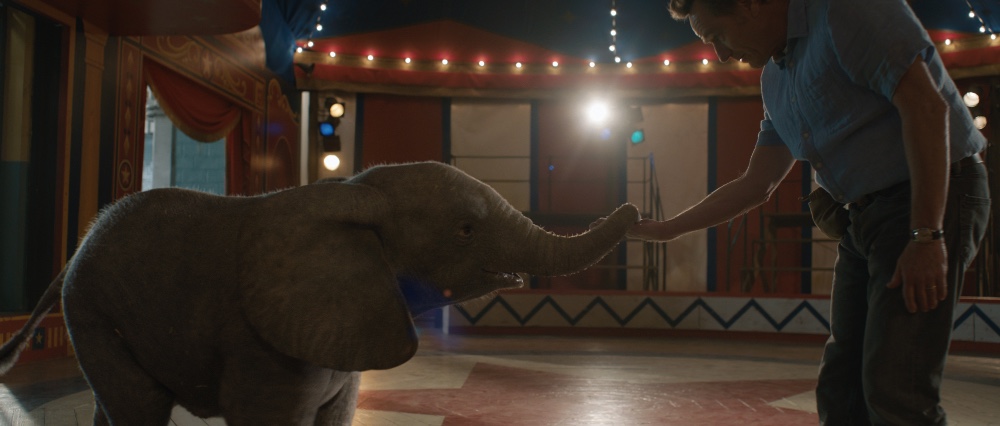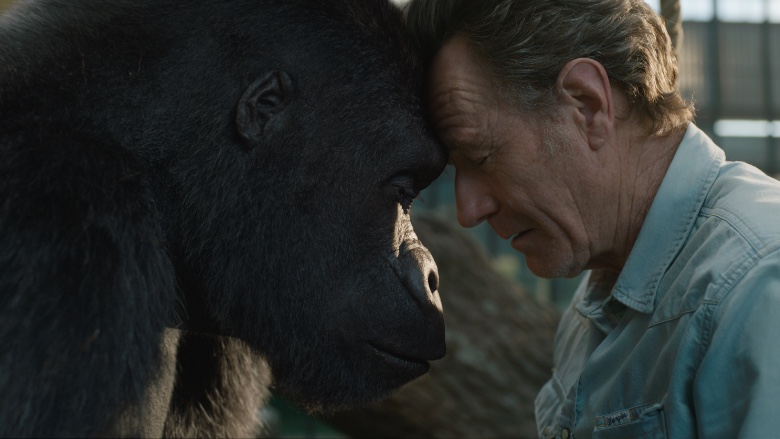
For director Thea Sharrock, The One and Only Ivan wouldn’t work unless its combination of live action, animation, and special effects were “seamless.” Based on an award-winning novel, the Disney production recounts the true story of a silverback gorilla living in a shopping mall near Tacoma, Washington.
Speaking on a Zoom conference call, Sharrock explained the steps involved in turning Mike White‘s script into a movie in which human performers interacted with CG animals. While the animals could talk with each other, they needed to seem realistic to the humans in the story.
Sharrock shot all the scenes with the actors, including Bryan Cranston as Mack, the owner of the small-time circus where Ivan lives, first. The effects and animation took place in a separate production pipeline.
Scenes with humans and without animals could be shot in a relatively straightforward manner, but once an animal was involved, Ivan became considerably more complicated. Joined by VFX Supervisor Nick Davis, VFX Supervisor (MPC) Ben Jones, Animation Director (MPC) Greg Fisher, and Animation Supervisor Santiago Colomo Martinez, Sharrock broke down what went into a scene in which Mack tries to teach a baby elephant named Ruby (voiced by Brooklynn Prince) how to perform tricks.
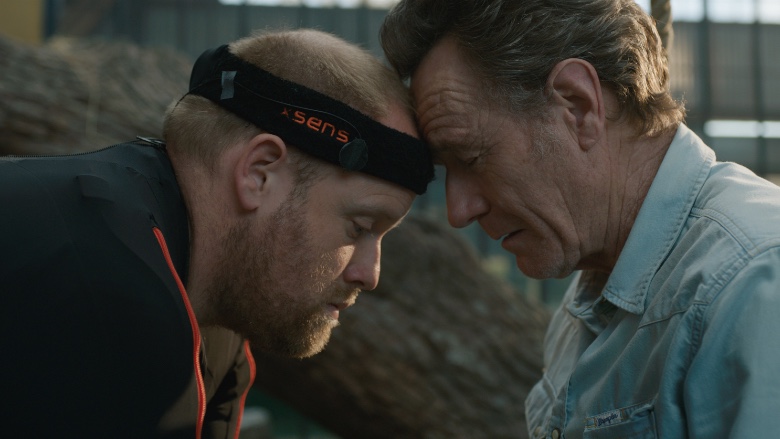
Their initial research included studying videos of how elephants moved and having Cranston work with a real-life circus trainer. Physical rehearsals paired Cranston with puppeteers and, in Ruby’s case, motion-capture performer Nick Kellington.
“Nick was crucial to the process,” Sharrock said. “The most important thing was that Bryan Cranston was never acting on his own. When he was on all fours, Nick was roughly the size of Ruby. Most of the time he wore two ears and a trunk, which were helpful for Bryan.”
Working with Director of Photography Florian Ballhaus ASC, Sharrock got the angles and takes she needed for the scene. That’s when Nick Davis and his team took over.
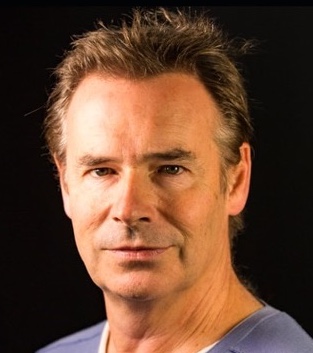
“We obviously had to get clean backgrounds,” Davis said, “So we had to remove the green puppet and put in the photorealistic elephant. We had to build an elephant, we had to texture it, and we had to light it, and more importantly we had to animate it.”
“From an animator’s point of view, it’s also about how you connect with Ruby as a baby, a young child,” Greg Fisher continued. “That’s a kind of balancing act, because she is a talking character, but also an animal, and she still needs to come across as cute.”
“For Ruby’s character to work, both Bryan and the animators have to know what’s needed from her,” Sharrock explained. “When she was being cross, when she was being cute, when she was seemingly aware of what was going on, when she was just being like a kid and sort of lost her concentration. That’s where Nick [Kellington] helped immensely.”
Making the scene even more complicated is the fact that the filmmakers had to include several points of view: from Ivan (voiced by Sam Rockwell) watching in his cage; Julia (Ariana Greenblatt), a young girl who works in the circus; and George (Ramon Rodriguez), Julia’s father.
“We were always trying to make sure that when Julia, for example, looked at Ruby, it was completely believable from her point of view. And for Ivan, too, who was seeing Ruby as a talking animal. For all those perspectives, Ruby had to be the same animal. The switch from talking to “real” elephant had to be seamless. That’s why what these guys managed to achieve is so amazing.”
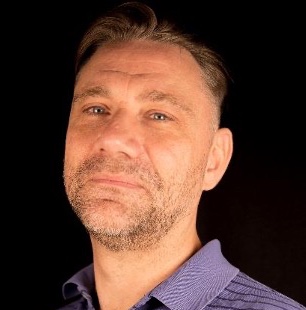
“There were two sides to that scene,” Fisher added. “First the virtual, CG part, where we kept popping back and forth between the virtual environment and the CG animation of Ivan and Bob [a dog voiced by Danny DeVito] watching Mack and Ruby, and then the live-action component of Mack interacting with Ruby.”
While visual effects artisans can adjust lighting and environments as the needs of a scene change, animators have less wiggle room. They must fit their work in with what’s already been filmed.
“The only time we felt really locked in was when we shot the animals with humans,” Sharrock said. “Any shot with Bryan in it, by the time we got to post, what we had was what we had. If the animators desperately needed another angle, we could try to create something without Bryan.”
Surprisingly, the animators had considerably more leeway working with voice actors.
“The vocal work was a process that we allowed to run and run,” Sharrock said. “Often the first recordings would be the performances that stuck. But the film moved and changed as we could see, literally and physically see, more and more of the effects. Sometimes it was a big shift, sometimes very small.”
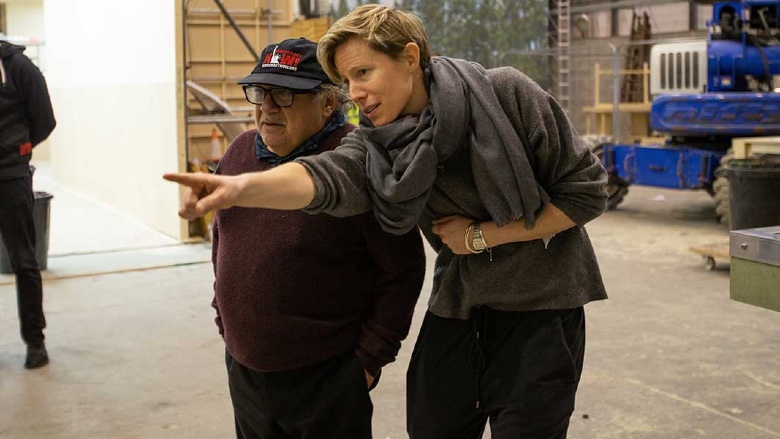
As Sharrock explained, when Rockwell and DeVito started working together, they only had basic drawings and descriptions of their scenes. By the time post-production began, she could show them nearly completed footage that inspired them to re-record some of their lines.
“It’s a process that starts from turnover and runs for the best part of a year,” Davis said. “A pipeline that gives Thea and her editor [Barney Pilling, ACE] the opportunity to build a scene, and animators to do another animation pass. Refining, tweaking, so every time she saw a shot, it’s one step forward.
“There’s a constant to-and-fro between editorial and animation. And on the technical side, where Ben and his team are creating the backgrounds, the effects that go with them, and the simulations of air and water within those environments.”
Sharrock added, “If you just take Bob, for example, I can’t tell you how many times he’s in a shot making a tiny dog noise. We would have Danny record, let’s call it 15 versions of a sound, and in the recording booth we’d be, ‘Yeah, we’ve got it.’
“Early on that sound would feel okay, the guys would animate toward that noise. But as the scene became clearer and clearer, further down the pipeline, suddenly the noise in that moment felt off. So we could get Danny to record it again.”
The biggest challenges for CG animators used to be hair and fur.

“Hair’s still difficult,” Ben Jones said, “but I feel we’re getting closer today. For Ivan, we had ways to animate more complex fur moves. Snickers, the poodle [voiced by Helen Mirren], turned out to have big, puffball kind of hair, like there was static electricity. I think we got good results from that.”
Jones, Fisher, and Martinez all worked on 2014’s landmark The Jungle Book. As Jones put it, the difference in technology today is “night and day.”
“We had to push the boundaries in some scenes,” Davis said. “When Ivan is interacting with paint or mud on his fingers, we had to work out liquid and fur dynamics, find ways to make them work seamlessly together so it would look like Ivan actually was painting on glass, or as a child working with mud and water to paint on rocks. Those were some of the hardest things, multiple simulations having to interact with animations in very complicated, difficult ways”.
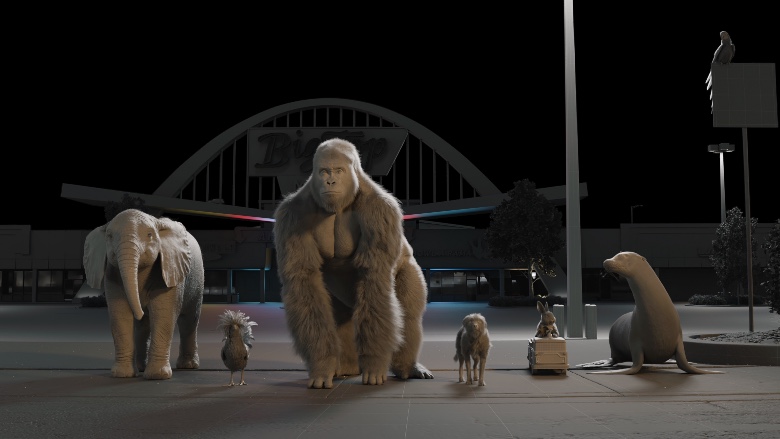
“That’s the difference today,” Fisher added. “Now we can simulate things together, how fur moves water but also how water moves fur. Lighting a dark gorilla in a dark room with the light behind him is a different kind of challenge.”
“We stayed in close contact with Florian [Ballhaus],” Davis said. “He helped design the lighting and camera setups for the virtual environments. He and Thea were on the stage together for the virtual shoot, sitting at a monitor just like a practical shoot. They would select the lenses, decide whether it was a dolly or crane or Steadicam shot. Making the choices a director and DP would on a normal film set.”
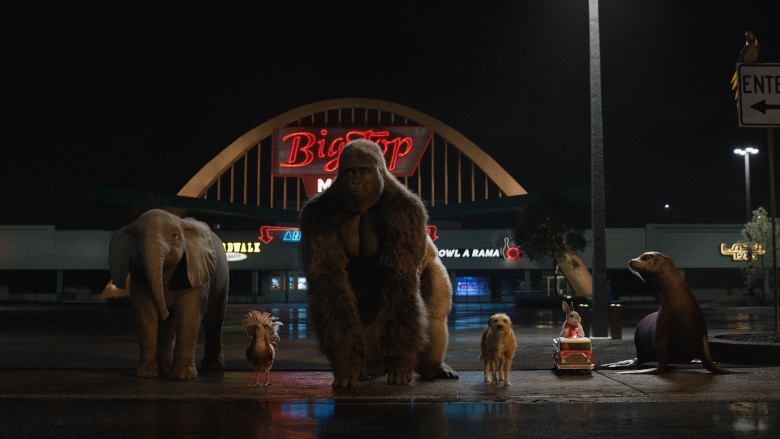
As Sharrock described it, “You could look at a monitor and see an entire environment and all the characters within it, and yet look on the other side of the camera and literally nothing’s there apart from the crew about to do your big dolly shot.
“The system felt like it was just an extension of what I normally do,” Sharrock added. “I could give notes to the virtual crew, I go back and do more work with the voice actors if something was missing or needed to be different. It just took longer. Normally you do a second take then and there. Here it might take a couple of weeks before I could see it again.”
The One and Only Ivan is currently available on Disney+. You can also read Below the Line‘s review here and watch a VFX breakdown video below.
All photos courtesy of Walt Disney Motion Pictures.

